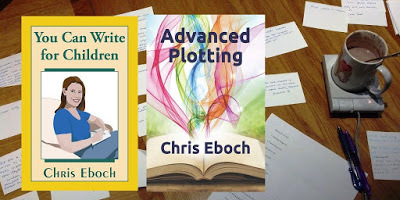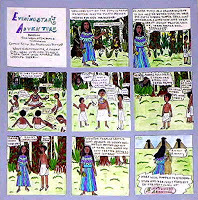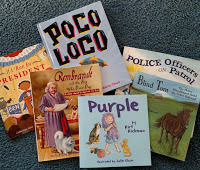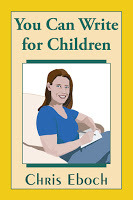#STORYSTORM - Developing Your Picture Book Ideas
 I discussed Finding the Seeds of Stories for STORYSTORM. When brainstorming, it's fine if you think up quick, basic ideas that need a lot of development – you’ve still met the challenge! But you may want to spend a little more time developing your idea before trying to write a draft for National Picture Book Writing Week (#NaPiBoWriWee, May 1-7).
I discussed Finding the Seeds of Stories for STORYSTORM. When brainstorming, it's fine if you think up quick, basic ideas that need a lot of development – you’ve still met the challenge! But you may want to spend a little more time developing your idea before trying to write a draft for National Picture Book Writing Week (#NaPiBoWriWee, May 1-7).(The following is excerpted from You Can Write for Children: How to Write Great Stories, Articles, and Books for Kids and Teenagers. The bookis available for the Kindle, in paperback, or in Large Print paperback. That book and Advanced Plotting will provide lots of help as you write and edit.)
Developing an Idea
 Once you have your idea, it’s time to develop it into a story or novel. Of course, you can simply start writing and see what happens. Sometimes that’s the best way to explore an idea and see which you want to say about it. But you might save time – and frustration – by thinking about the story in advance. You don’t have to develop a formal, detailed outline, but a few ideas about what you want to say, and where you want the story to go, can help give you direction.
Once you have your idea, it’s time to develop it into a story or novel. Of course, you can simply start writing and see what happens. Sometimes that’s the best way to explore an idea and see which you want to say about it. But you might save time – and frustration – by thinking about the story in advance. You don’t have to develop a formal, detailed outline, but a few ideas about what you want to say, and where you want the story to go, can help give you direction. You can look at story structure in several ways. Here’s one example of the parts of a story or article:
· A catchy title. The best titles hint at the genre or subject matter.
· A dramatic beginning, with a hook. A good beginning:
– grabs the reader’s attention with action, dialogue, or a hint of drama to come
– sets the scene
 – indicates the genre and tone (in fiction) or the article type (in nonfiction)
– indicates the genre and tone (in fiction) or the article type (in nonfiction)– has an appealing style
· A solid middle, which moves the story forward or fulfills the goal of the article.
Fiction should focus on a plot that builds to a climax, with character development. Ideally the character changes by learning the lesson of the story.
Nonfiction should focus on information directly related to the main topic. It should be organized in a logical way, with transitions between subtopics. The tone should be friendly and lively, not lecturing. Unfamiliar words should be defined within the text, or in a sidebar.
· A satisfying ending that wraps up the story or closes the article. Endings may circle back to the beginning, repeating an idea or scene, but showing change. The message should be clear here, but not preachy. What did the character learn?
· Bonus material: An article, short story, or picture book may use sidebars, crafts, recipes, photos, etc. to provide more value. For nonfiction, include a bibliography with several reliable sources.
Take a look at one of your STORYSTORM ideas. Can you start developing it by thinking about story structure in this way?
 You Can Write for Children: How to Write Great Stories, Articles, and Books for Kids and Teenagers is available for the Kindle, in paperback, or in Large Print paperback.
You Can Write for Children: How to Write Great Stories, Articles, and Books for Kids and Teenagers is available for the Kindle, in paperback, or in Large Print paperback. Advanced Plotting is available in print or ebook at Amazon and in print at Barnes & Noble online.
 Chris Eboch’s Haunted series for ages 9-12 features The Ghost on the Stairs, The Riverboat Phantom and The Knight in the Shadows. Her other books include The Well of Sacrifice, a middle grade Mayan adventure, used in many schools, and the inspirational biographies Jesse Owens: Young Record Breaker and Milton Hershey: Young Chocolatier, written under the name the M.M. Eboch. See her website at https://chriseboch.com/
Chris Eboch’s Haunted series for ages 9-12 features The Ghost on the Stairs, The Riverboat Phantom and The Knight in the Shadows. Her other books include The Well of Sacrifice, a middle grade Mayan adventure, used in many schools, and the inspirational biographies Jesse Owens: Young Record Breaker and Milton Hershey: Young Chocolatier, written under the name the M.M. Eboch. See her website at https://chriseboch.com/
Published on January 22, 2020 06:00
No comments have been added yet.



